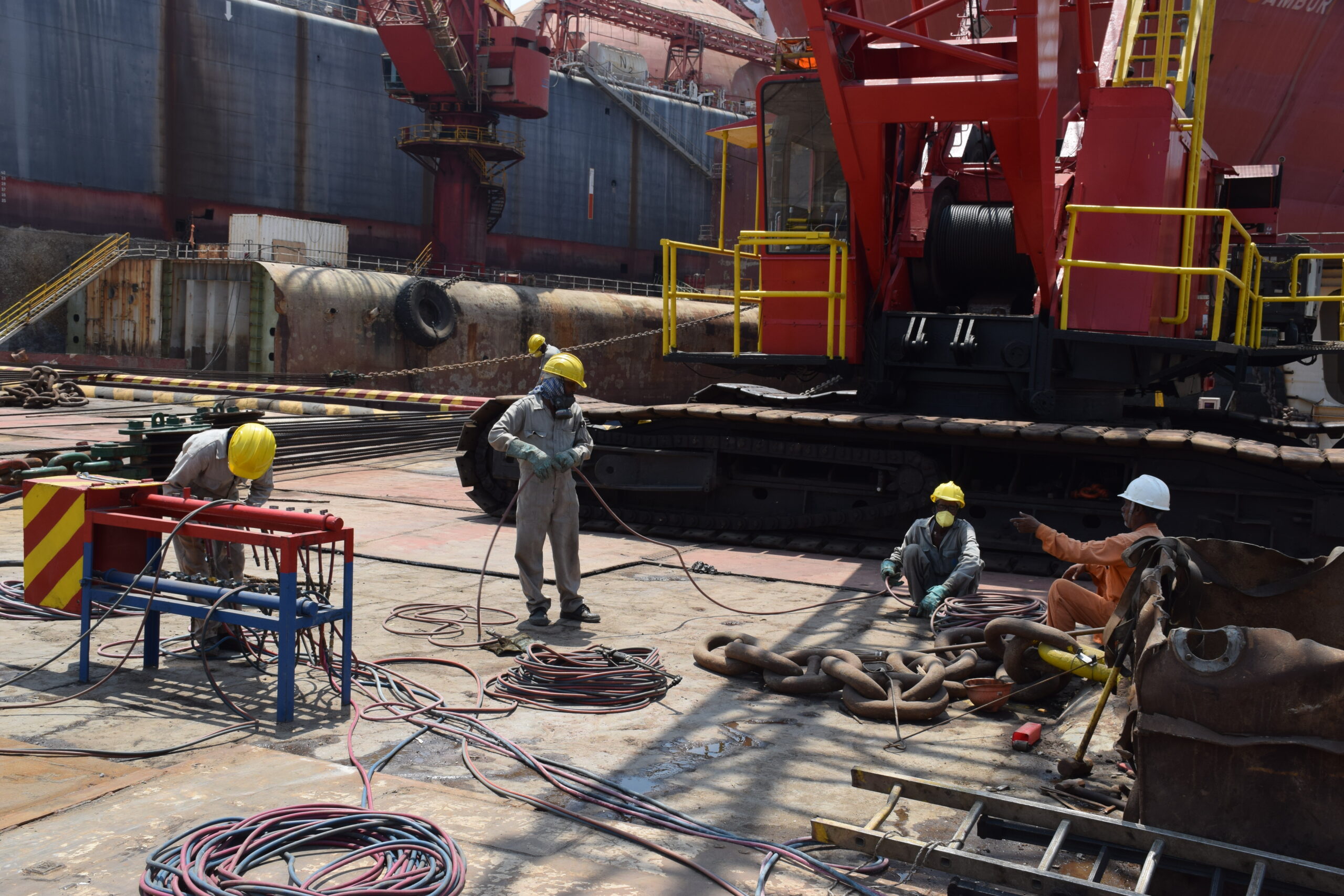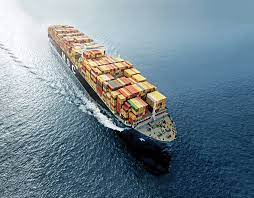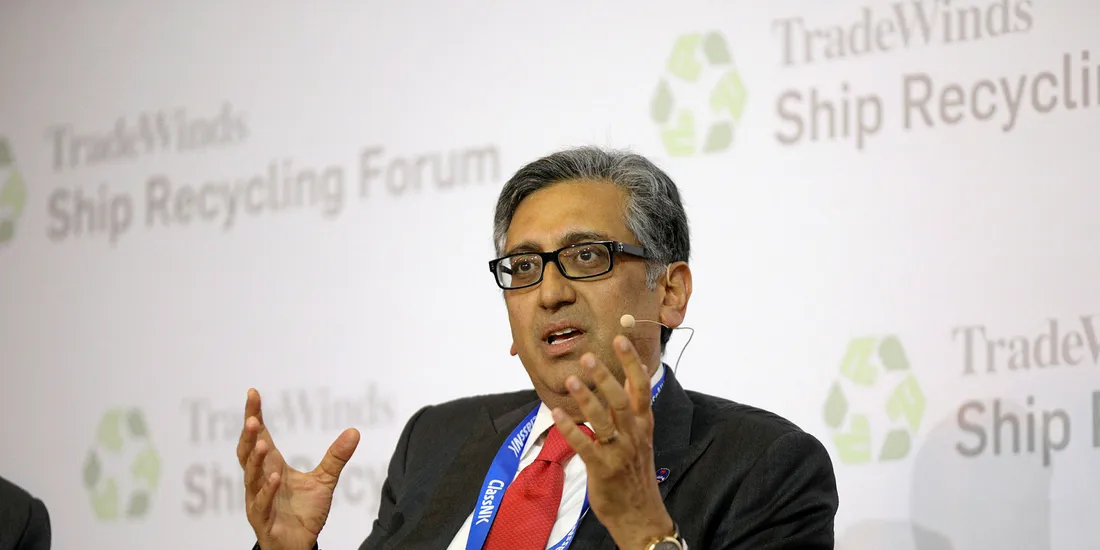Global Container Fleet Faces 1.8 Million TEU Recycling Backlog: Says BIMCO
Analysts warn that ageing ships, weak demand, and new environmental rules could spark a surge in scrapping activity after years of stagnation.

The world’s container shipping industry is sitting on a massive backlog of ageing vessels due for recycling, according to new estimates from the Baltic and International Maritime Council (BIMCO). The shipping association reports that while only a handful of container ships have been dismantled so far in 2025, a growing number of older vessels remain in active service long past their typical operational lifespan, creating what BIMCO calls a “recycling surplus” amounting to at least 1.8 million twenty-foot equivalent units (TEU).
The figure, analysts say, may actually be significantly higher, as continued low scrapping rates since 2021 have inflated the number of ships operating beyond their expected age limits.
According to BIMCO data, only ten container ships have been recycled so far this year — a remarkably low figure for an industry that is expanding at a record pace in terms of newbuild deliveries. The organisation estimates that there is now a backlog of at least 500 ships that, based on historical patterns, would normally have been sent for dismantling.
“This continues the low recycling activity that has persisted since 2021, as many ships have been in service beyond their usual recycling age,” explained Niels Rasmussen, BIMCO’s Chief Shipping Analyst. “The proportion of container ships that are 20 years or older has risen from 16% in 2020 to 24% today. The share of older ships has not been this high since the early 1970s.”
The growing age profile of the fleet is a red flag for shipowners and regulators alike. Typically, container ships have an economic lifespan of around 20–25 years, after which maintenance costs, fuel inefficiencies, and compliance issues make them less viable to operate. However, a strong freight market during and immediately after the pandemic encouraged owners to keep older ships running longer to capitalise on historically high charter rates.
BIMCO’s assessment draws on data from 2000 to 2019, a period seen as representative of average market conditions. During those two decades, around 20% of container ships were recycled before reaching 20 years of age, while 53% were dismantled before their 25th year.
Based on these historical recycling patterns, Rasmussen said, “We estimate the current minimum recycling overhang to be 500 ships, equivalent to 1.8 million TEU. Before the financial crisis of 2008, a strong market led to lower recycling activity, but from 2009 onwards, a weaker market and a wave of recycling dominated. The 2000–2019 period, therefore, provides a fair benchmark for average recycling behaviour.”
However, BIMCO acknowledged that the 1.8 million TEU figure likely represents only the minimum threshold. The true extent of the pending recycling could be much greater once current economic and regulatory pressures are factored in.
Industry analysts note several reasons why recycling demand could soon accelerate:
-
A glut of newbuild deliveries – Shipyards worldwide are working through a historic orderbook, with a surge of ultra-large container vessels (ULCVs) set to join the global fleet through 2026. Many of these ships, ordered during the post-pandemic boom, are now entering service in a softer market, potentially displacing older tonnage.
-
Changing trade routes – The re-opening of the Suez Canal for certain ship sizes from 2026 and the reshaping of trade lanes due to geopolitical shifts could reduce the need for smaller or less fuel-efficient vessels.
-
Stricter environmental regulations – Upcoming IMO efficiency mandates, including the Energy Efficiency Existing Ship Index (EEXI) and Carbon Intensity Indicator (CII) rules, are pressuring owners to either upgrade ships or retire those that cannot economically comply. Older tonnage, particularly ships built before 2005, faces challenges in meeting these standards without costly retrofits.
Together, these factors could force a wave of older ships into the recycling market over the next several years.
To understand the potential scale of the challenge, BIMCO conducted a second analysis using recycling rates typical of weaker market periods in the 2010s, when scrapping levels were higher. This alternative model suggests a maximum recycling overhang of 850 ships, totalling approximately 3.1 million TEU.
In practical terms, this backlog would take years to clear. Even at the highest annual scrapping rate on record — set in 2016, when 185 ships totalling 0.6 million TEU were dismantled — it would take between three and five years to recycle the current surplus.
“Future recycling is very difficult to estimate accurately,” Rasmussen cautioned. “But our data indicate a surplus of 6% to 10% of the global container fleet, corresponding to 33% to 55% of ships older than 20 years. This backlog is larger than the orderbook for all container ship segments below 8,000 TEU, meaning that in the coming years, fleet growth could be driven almost entirely by large vessels.”
The anticipated wave of recycling could have long-term implications for the structure of the container shipping industry. As larger vessels continue to dominate new deliveries, smaller ships may be squeezed out of traditional regional and feeder routes.
“This dynamic could lead to a cascade effect, where large ships move into routes that smaller ships currently serve,” BIMCO noted in its analysis. Such a shift would alter the economics of short-sea shipping and could disadvantage operators specialising in smaller tonnage, particularly in regions like South Asia, Africa, and Latin America.
Fleet renewal is therefore likely to become increasingly polarised — with mega-carriers operating fleets of fuel-efficient giants, while small and medium operators may struggle to remain competitive as older ships are retired or restricted by environmental compliance requirements.
For ship recycling yards, particularly in South Asia’s major centres such as Alang (India), Chattogram (Bangladesh), and Gadani (Pakistan), BIMCO’s forecast suggests a long-awaited revival. After years of subdued activity, recycling capacity could soon be stretched as more container ships head for dismantling.
Global recycling volumes have remained low since 2021, despite increasing environmental awareness and better enforcement of safety standards under the Hong Kong International Convention for the Safe and Environmentally Sound Recycling of Ships, which is expected to enter into force in 2025. Once fully implemented, this convention could further shape where and how shipowners choose to recycle their vessels.
However, a rapid influx of ships for scrapping could strain available yard capacity and environmental oversight. Analysts warn that while South Asian yards have improved their infrastructure, ensuring compliance with safety and environmental norms will remain a critical challenge.
The recycling surplus underscores a broader adjustment underway across the global shipping industry. After years of expansion fueled by pandemic-driven trade volatility and record freight earnings, the container sector is now entering a phase of rationalisation.
Freight rates have normalised, charter periods are shortening, and older vessels that once generated windfall profits are becoming financial liabilities. “We are now likely entering a new phase of the shipping cycle,” Rasmussen observed, “one where capacity growth will be tempered by recycling rather than expansion.”
This cyclical correction, though painful for some shipowners, could ultimately help rebalance the global fleet, improving utilisation rates and supporting a more sustainable future for the industry.
BIMCO’s warning of a 1.8 to 3.1 million TEU recycling backlog offers a stark reminder of the shipping industry’s cyclical nature — and of the environmental and operational pressures shaping its next chapter.
While predicting the exact pace of recycling remains difficult, one thing is clear: the container shipping sector faces a decisive moment. Over the next few years, the combination of ageing ships, regulatory tightening, and market correction is likely to push recycling activity to levels not seen in a decade, reshaping the composition and efficiency of the global fleet in the process.
Author: shipping inbox
shipping and maritime related web portal









